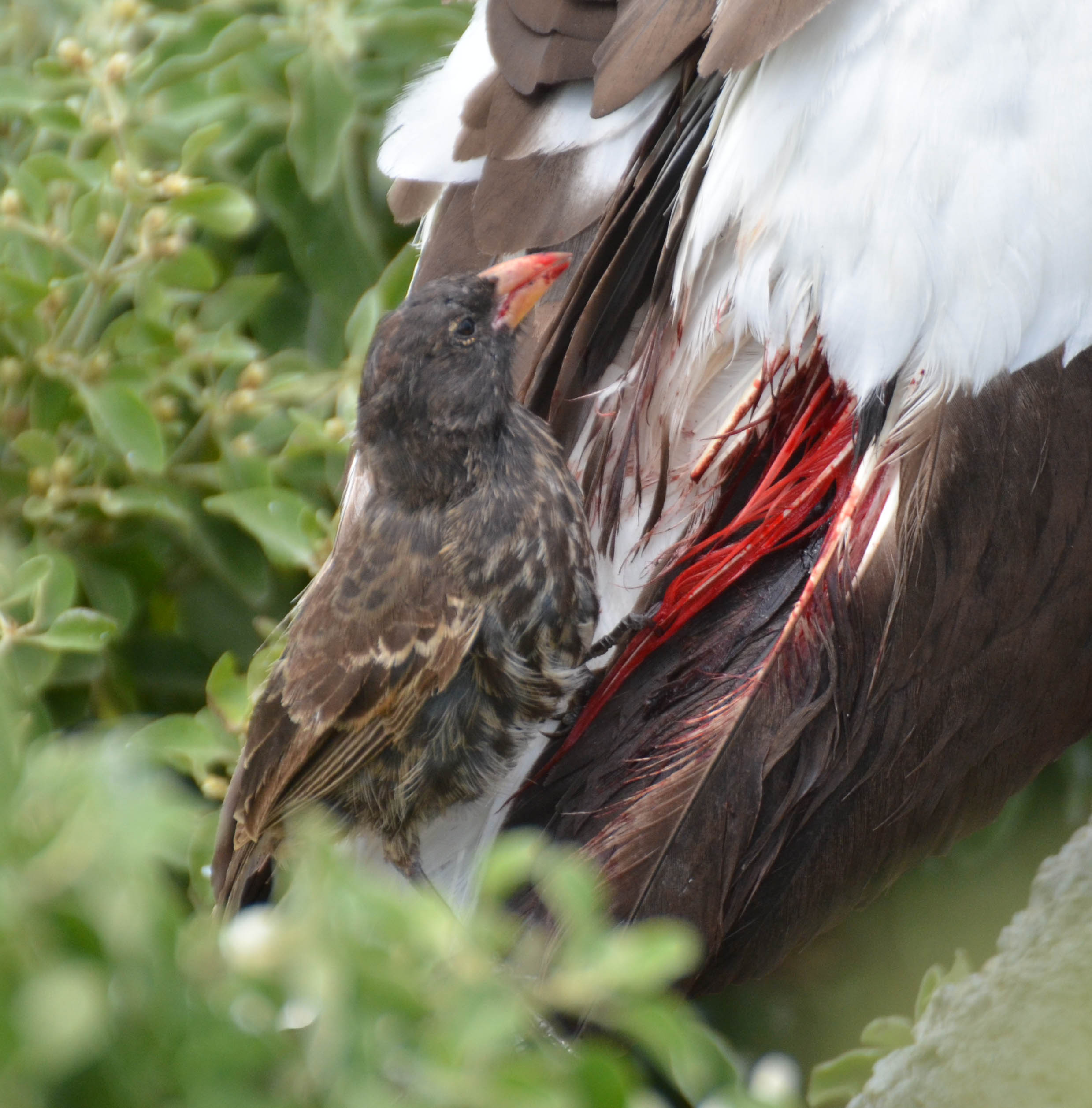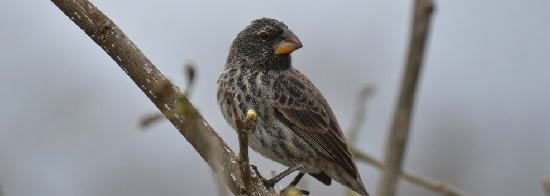
| |
| Home |
| Research |
| Publications |
| People |
| Teaching |
| Field Course |
| Conservation |
| Outreach |
| Adventures |
| Opportunities for students |
| Contact |
RESEARCH PROGRAM |
| ADAPTIVE RADIATION IN DARWIN'S FINCHES |
Darwin’s finches remain one of the most iconic examples of adaptive radiation. We have two projects that explore adaptation in this iconic system. Our first project explores the hypothesis that hybridization between species can facilitate adaptive evolution by serving as a conduit for advantageous alleles to be shared among populations. Using a long-term data set of all species of ground finches, we are using next generation sequencing technology to test whether hybridization is primarily creative in driving adapation. Relating hybridization levels (via scans of genome-wide loci) to ecological conditions (droughts or heavy rainfall) will inform the extent to which species integrity might depend on changing environments. This project is being led by Dr. Jaime Chaves, and is part of a long-term collaboration with lab groups from McGill University, University of Massachusett, and the Smithsonian Tropical Research Institute.
|
A (likely) medium ground finch with a large bill, approaching that of the large ground finch. The morphological continuum of all species of ground finches will help to address whether the role of hybridization in evolutionary diversification is primarily creative (by generating novel morphologies) or negative (by preventing the independent evolution of diverging groups). |
| See the News & Views piece on our recent paper in Molecular Ecology |
Second, we are also exploring the genetic and molecular bases of the unique blood-feeding behavior of two populations of the sharp-beaked finch Geospiza difficilis in the remote islands of Darwn and Wolf. We are using transcriptomic and proteomic approaches, coupled with field data, to test the hypothesis that vampire finches have evolved similar adaptations as to other blood-feeding organisms, like mosquitoes, leeches, ticks and vampire bats. This work is being spear-headed by Dan Baldassarre, a NSF Postdoctoral Fellow in the Uy Lab.
|
 |
| A vampire finch, Geospiza difficilis septentrionalis, feeding on a Nazca booby on Wolf Island. |
| Back to Current Research Page |
| Back to Uy Lab Home |
|
